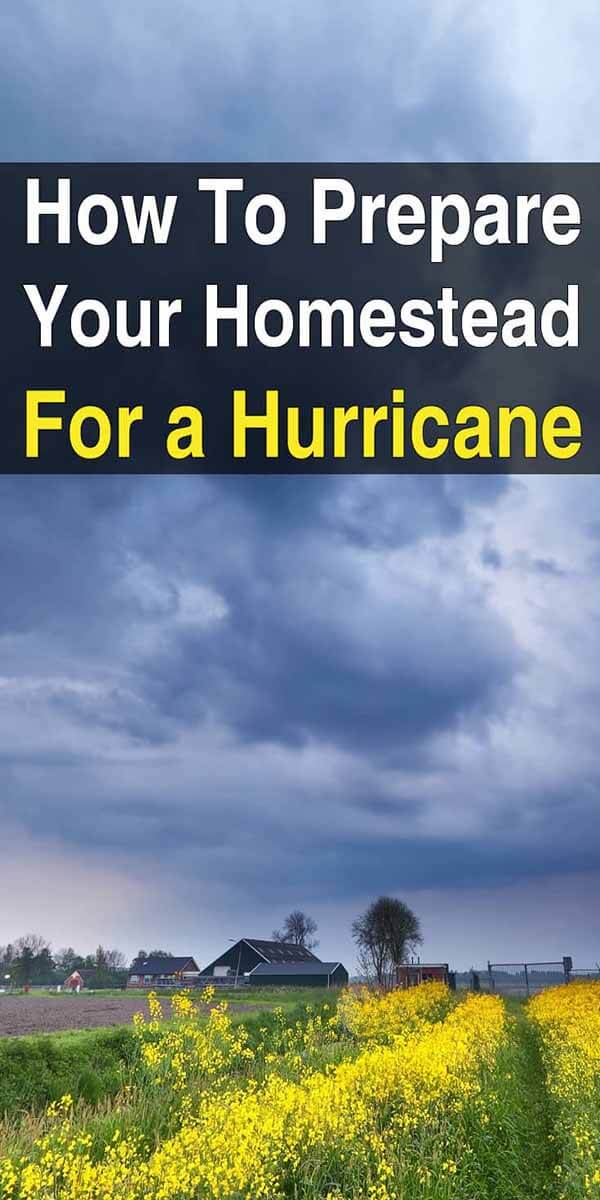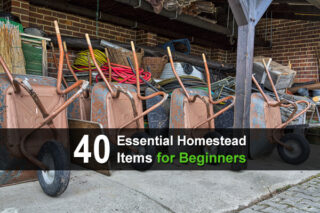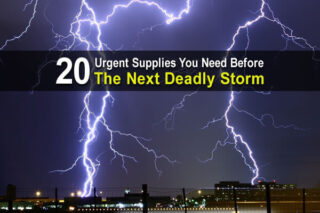Estimated reading time: 5 minutes

Hurricane season is upon us, and we all are familiar with the TV and internet weather maps that track the ominous swirls of wind and water that develop this time of year. However, if you live in a hurricane zone, it is foolhardy to wait until a hurricane develops to prepare for its fury.
Here are 15 steps to follow, so that if a severe storm is threatening your homestead, you will be as ready as you can be.
1. Create an emergency kit for your family. This kit will work for a variety of disasters and should include first-aid supplies, medicines, emergency contact phone numbers and important documents. Store this kit in a safe, dry place along with your emergency food and water supply. This site will help you get started: RedCross.org.
2. Educate yourself on your community’s emergency plans, including hurricane evacuation routes and safe shelters. Find out if your community provides any resources that will help protect your private property.
3. Create an emergency escape route for your family. Be sure to establish a meeting point in case someone in your family is not home during an evacuation.
4. Maintain your landscape so that tree limbs and branches are less likely to become projectiles during heavy winds.
5. Inspect and regularly maintain your gutter system, keeping gutters and downspouts free of leaves and other debris.
6. Protect windows and glass doors with plywood. Reinforce entry, garage and outbuilding doors.
7. Tie down yard furniture and equipment or bring it inside. Hurricane force winds can easily pick up and toss patio furniture, grills, garbage cans, rakes and lawn ornaments, making them dangerous projectiles.
8. Make sure your cell phones, laptops and charging stations are at full power.
9. Prepare for potential flooding with ditches around the perimeter of your home, French drains and/or sandbags.
10. Check that you have an adequate supply of flashlights, candles, batteries and oil lamps.
11. Fill up your vehicles with fuel.
12. Have blankets, hats, coats, extra clothes and a tent packed and ready to go in case they are needed.
Now that your family’s needs are covered, it is time to consider your animals.
13. Prepare your chickens by following these steps:
- Since high winds can kill or injure your flock, bring them indoors if at all possible. Dog crates, rabbit hutches or even cardboard boxes can make adequate temporary quarters for them in a barn, garage or basement.
- If you cannot bring them inside, carefully inspect your coop’s boards, fencing or roofing and secure anything that is loose.
- Remove lightweight items such as buckets or seats.
- Turn off coop’s electrical power and water until after the storm.
- Close all doors and windows, securing with plywood as needed.
- Purchase extra feed for after the storm and store feed at least two feet above the ground in a dry area.
- Store enough water to last your chickens at least one week. Each bird will need a minimum of one gallon of water every three days. If water supply becomes scarce, cut back on feed.
- Maintain a chicken first aid kit with bandages and antibiotic ointment.
14. Prepare your livestock for a hurricane by following these steps:
- Plan ahead for a potential evacuation by introducing livestock to trailers ahead of time. Do not expect them to go willingly into a new vehicle during a stressful weather situation.
- Make sure all animals have updated vaccinations and are properly identified with ear tag, tattoo, brand or microchip.
- Create a livestock emergency kit in a water-tight lidded container that includes your name and contact information, description of your livestock, basic veterinary supplies, medical information and location of your feed and water supplies for your animals. The American Veterinary Medical Association has an animal-specific list of items to include in your kit.
- Plan to shelter smaller animals such as pigs and rabbits in a barn or garage if possible. Place larger animals in a pasture that offers as much protection from the wind and rising water as possible.
- Store feed, hay, horse tack and other supplies stored in a safe location that will withstand rising water and high wind.
- Have enough feed and water to last for at least one week after the storm. That can be up to 150 gallons per large animal.
- Inspect fencing, corrals, gates, and enclosures for anything that needs repairing or replacing before high winds strike.
- Educate yourself on organizations, such as your local Department of Agriculture and Consumer Services or state veterinarian’s office, that can provide emergency housing or rescue of livestock in your area.
15. When a hurricane is threatening, it is a time for a cool head and organization. Assign different tasks to each member of the family.
In addition to the above steps, it is critical to use your common sense. For example, do not risk your life or a family member’s life to check on the chickens in the height of a storm. As much as we care for our animals and our property, they are replaceable. Our family members are not.
Also, many homesteaders report that the purchase of a backup generator is well worth the expense for the peace of mind it offers during the threat of severe weather.










